FoLY News:
Here is a copy of the winning photo in the 2017 FoLY Photographic Competition. The winning entry was from Jane Stuart. Congratulations, Jane! A larger copy of this image can be viewed at The Alma Inn where it is on display in the main bar. It can also be seen in St.Mary’s Church as part of the FoLY exhibition.
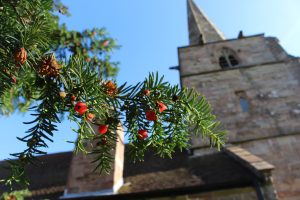
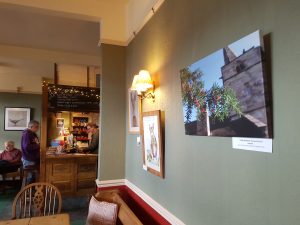
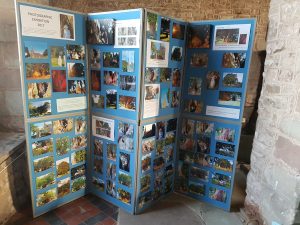
FRIENDS OF LINTON YEWS (FoLY).
.
St Mary’s Linton stands on an ancient site, distinguished by the oldest tree in England and may have a history connected with the Christian community at ancient Ariconium. To have such an ancient, living, albeit silent, witness to your parish’s history is something that is worth celebrating.” These lines appeared in a letter written by Conservation Foundation to Linton PCC in July 2016 offering to provide a grant to help celebrate and maintain the Linton Yew. The Woodland Trust also lists the Linton Yew as one of just ten British ‘millennial’ trees that have been alive for over one thousand years.
FoLY (Friends of Linton Yews) is a small group looking to protect and conserve the four ancient common yews growing in Linton churchyard for the benefit of future generations. The group successfully applied for the Conservation Foundation grant on behalf of Linton PCC and the monies received were used to launch a new churchyard trail at Easter in 2017. In addition to the Linton Yew growing near the church porch, visitors can see veteran yew trees named ‘Bonnor’ just south of the church, ‘Emily’ by the village hall gate and ‘Vaughan’ by the main church steps. The other yews growing in the churchyard are Irish Yews planted by the Reverend Edward Palin in 1875-76 as part of his major refurbishment of the church.
Although ancient yew trees are notoriously difficult to age, many experts agree that the Linton Yew is a strong contender to be the oldest tree in England. Current thinking is that the tree, the biggest yew in Herefordshire, could be up to 1,500 years old. Indeed, it has been argued that the Linton Yew was there in the time of Christ.
The Common Yew prefers a mild climate and is susceptible to periods of drought. It is one of three native coniferous trees with male and female flowers growing on separate trees. The Linton Yew is female. Yew grows only very slowly which imparts immense strength to the trunk and branches. This provides a durable wood for carving and, at one time, for longbows too.
In theory, the yew could be immortal although Man and environmental change will always pose a threat. It is growth itself that makes the tree vulnerable as they can snap under their own weight or keel over in storms. But this rarely is the end. A yew can turn decay into health by allowing fungal infections to eat up its heartwood. This will leave a hollow tree but the tensile strength of the remaining wood continues to support the heavy crown of leaves. Branches may also loop down under their own weight until they touch the ground. Here they will set root.
Amazingly, whilst the centre of a yew is rotting, a branch may put down a root into the decaying leaf mould material inside the hollow trunk. The tree will regenerate! This phenomenon can be seen in the Linton Yew.
In older examples, the spread of decay will usually split the trunk into staves each bowing out to root itself individually. By so doing, a single tree can be transformed into a grove. However, the unique trick of the yew is simply to stop growing. There is no increase in girth and no annual growth ring. It can, of course, resume growing but it may not do so in the trunk for centuries. Indeed, the Linton Yew has not changed in girth since measured in the early 1800s. All the experts are in agreement that the Linton Yew may well long pre-date the current St. Mary’s Church!
Yew trees have, of course, been threatened by Man throughout history. In particular, yews have been removed since medieval times because of their toxic effect on animals. Subsequently, yews were felled on a huge scale for longbows. Henry IV ordered his royal bowyer ‘to cut down yew or any other wood for the public service’. He explicitly exempted the estates of the religious orders and the yews in churchyards, including the Linton Yew, were therefore saved from the longbow mania. As a result, yews are now always associated with churchyards.
The Linton Yew was nearly destroyed by a catastrophic fire in 1998. Fortunately, because of its great ability to produce new shoots almost anywhere on its trunk and branches, the yew has recovered. There are now strong signs of new growth away from the fire damaged areas in the main trunk.
Christianity and paganism share a strong spiritual association with the yew. The yew tree is said to reflect the Christian ethos of eternal life. To many, the longevity of these ancient trees can be seen as a direct link to our past and the yew represents a living memorial. A Remembering Service is held each year at St. Mary’s using the Linton Yew as a backdrop. Similar events recalling the lives of lost family and friends may well have taken place in this location for hundreds if not thousands of years.
The appearance of the Linton Yew at sunset cloaked in gold can be a truly mystical experience. What sights has this tree seen over the millennia?


LINTON YEW PEN
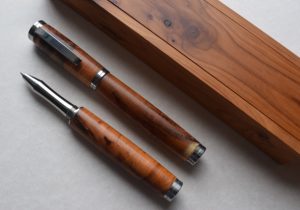
It is hoped that the sales of The Yew Pens will raise money towards keeping the yew trees in good condition for the benefit of future generations.
The Linton Yew is thought by experts to be around 1,500 years old. The Conservation Foundation, founded by TV botanist David Bellamy, believes it is the oldest tree in England. The Linton Yew experienced a near catastrophic fire in 1998. A rare piece of yew wood which became detached from tree at that time is now being used by Ben Casson, of Wobage Farm Craft Workshops fame, to make a limited number of very stylish pens (maximum 20). This is a unique opportunity to purchase a piece of English history. Each pen is a work of art in itself and typically represents some 500 years of tree growth. If you are looking for a memorable gift for, say, a 21st birthday or a retirement gift look no further. Each pen comes in its own presentation box and with a certificate of authenticity.
The pens are available either as a roller-ball or as a cartridge fountain pen. Each will retail for £100. All profits from pen sales will support the maintenance of the Linton Yew for the benefit of future generations. Orders are now being taken. If you wish to reserve a pen please contact Lynn Hodgson on 07985 594 562.
Previous stories;
‘An Evening with Archie Miles’ Friday 23rd June 2017, St.Marys’ Church.
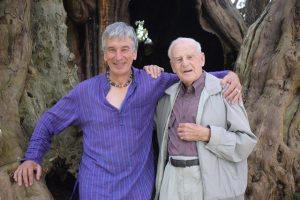
This was a wonderfully informative evening in the Church, listening to Archie, pictured here with Brian Squires, who first contacted Archie talk about ancient trees, and our ancient yews in particular.
Roger Davies talks about the Church and the various changes and building developments, and also about the sites of specific interest in the Churchyard.
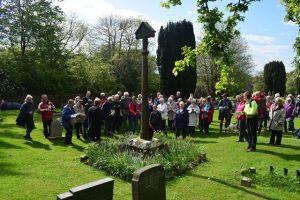
Roger explains the history of the church, the yew trees and the features and ancient sites within the churchyard. Here he is explaining the historical significance of the ‘gathering cross’.
Yew and Me – The Linton Yew
Visitors to Linton Village Fete on the afternoon of Sunday 4th September 2016 (2pm) were invited to share their memories and photographs of the ancient yew growing in St Mary’s churchyard.
If you require any further information or wish to contribute material to this initiative please contact Roger Davies (email address:rogerdavies1@sky.com).







